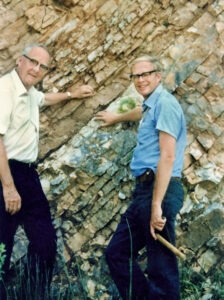 Among academics, the maxim “publish or perish” is a threatening reminder of the importance of publication: publish your research or risk losing your job. Despite its cynicism, the phrase makes an important point: publishing findings, hypotheses, theories, and the lines of reasoning and evidence relevant to them is critical to the progress of science. The scientific community can only fulfill its roles as fact checker, visionary, whistleblower, and cheerleader if it has trusted information about the work of community members. Scientists distribute information about their ideas in many ways — informally communicating with colleagues, making presentations at conferences, writing books, etc. All of these are important to allow peer review and the establishment of a community consensus around scientific ideas. But among these different modes of communication, peer-reviewed journal articles are especially important.
Among academics, the maxim “publish or perish” is a threatening reminder of the importance of publication: publish your research or risk losing your job. Despite its cynicism, the phrase makes an important point: publishing findings, hypotheses, theories, and the lines of reasoning and evidence relevant to them is critical to the progress of science. The scientific community can only fulfill its roles as fact checker, visionary, whistleblower, and cheerleader if it has trusted information about the work of community members. Scientists distribute information about their ideas in many ways — informally communicating with colleagues, making presentations at conferences, writing books, etc. All of these are important to allow peer review and the establishment of a community consensus around scientific ideas. But among these different modes of communication, peer-reviewed journal articles are especially important.
What’s in a scientific journal article?
A journal article is a formal version of the standard high school lab report. In journal articles, scientists (usually a group of collaborators) describe a study and report any details one might need to evaluate that study — background information, data, statistical results, graphs, maps, explanations of how the study was performed and how the researchers drew their conclusions, etc. Before they are published, these articles are sent to other scientists, who review them and determine if the science they describe is of high enough quality to become a part of scientific debate. The articles are then published in scientific journals either in print or on the internet. Print journals look much like any magazine, except that they are chock full of firsthand reports of scientific research. Journals distribute scientific information to researchers all around the world so that they can keep current in their fields and evaluate the work of their peers.
Journal articles neaten up the messy process of science, presenting ideas, evidence, and reasoning in a way that’s easy to understand — in contrast to the often circuitous (and sometimes tedious) process of science. For an example, check out Walter Alvarez’s story below…
UNTANGLING A TWISTED PATH

In 1980, in the journal Science, Walter Alvarez and his colleagues published a scientific article describing their controversial new hypothesis that the dinosaur extinction was triggered by a massive asteroid impact. Despite its splashy and novel topic, the article laid out its hypothesis and evidence in the conventional way — linearly — which allowed colleagues in geology and paleontology to quickly understand and evaluate the research. Though helpful for scientific communication, this linear presentation can give the impression that an investigation has been plotted out from the beginning — but in fact, Alvarez’s study was far from linear. He stumbled onto his hypothesis unexpectedly, originally setting out to study the tectonic movements of the Italian peninsula. After an intriguing series of twists, turns, false starts, inspirations, and rejected hypotheses, he and his colleagues found that they had completed a rather different, but compelling, investigation.
Take a sidetrip
Read more about Walter’s journey in Asteroids and dinosaurs.
Visit the Visionlearning website to learn more about publication and peer review or scientific journals and journal articles.
You can introduce college and advanced high school students to the primary literature in your field by following the guided discussion format outlined by these Visionlearning resources:
For tips on using journal articles in college biology courses, visit the Journal Club Toolkit on Understanding Evolution.
